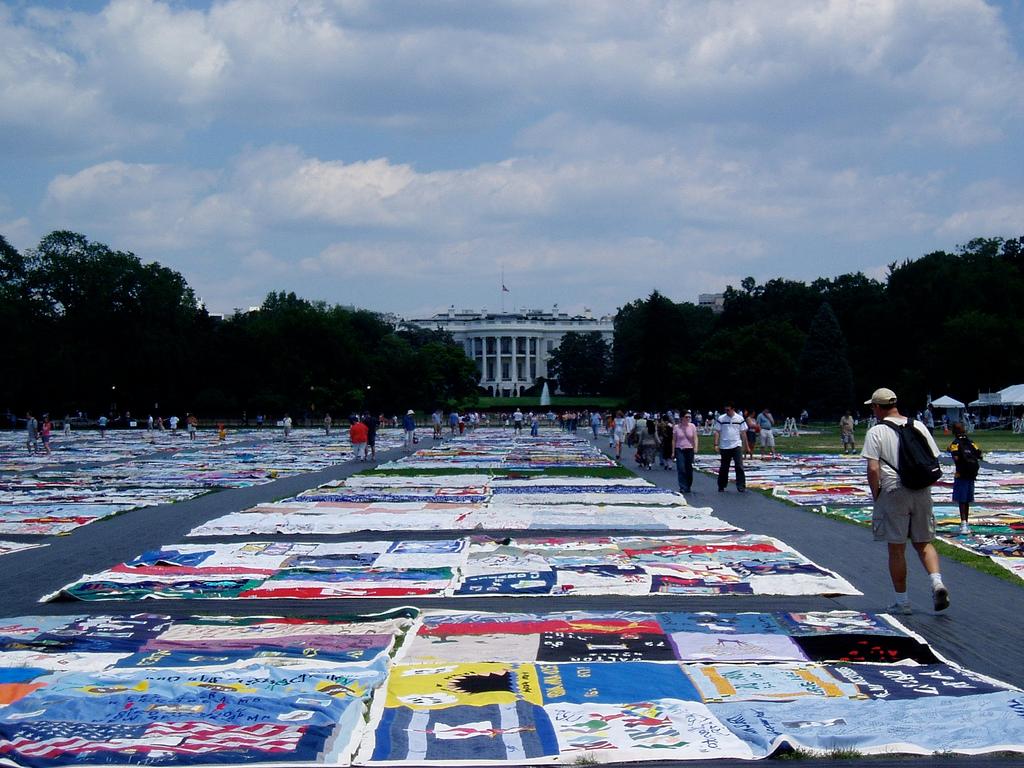AIDS Memorial Quilt turns 25 as fight against the disease continues
The AIDS Memorial Quilt was on display in front of the White House in 2004. (Photo by Scott Chacon via Flickr.)
The AIDS World Quilt is the world’s biggest community art project. Its 48,000 individual panels — sewn by 100,000 people — would stretch 50 miles end-to-end.
But it has a backstory full of tragedy. Each 6-foot by 3-foot panel of the AIDS Memorial Quilt was contributed by a friend or family member of someone who died of the disease.
The project is celebrating its 25th anniversary this summer. A quarter century after its first panel was sewn, the quilt continues to remind people of America’s ongoing battle against HIV and AIDS.
“A lot of panel makers, myself included, feel like our friends’ lives live on in this quilt,” said Julie Rhoad, president and CEO of the NAMES Project Foundation, the organization that oversees the quilt.
Kelly Rivera Hart is another panel maker. A San Francisco native, Hart has lost countless friends, neighbors, lovers and co-workers to AIDS during the past few decades. He recently made a panel for a close friend who died of the disease in 2002.
The Center for Disease Control estimates more than 619,000 people with AIDS in the United States have died since the epidemic began in the 1970s. About 1.2 million people in the country are currently living with HIV.
As a volunteer for the NAMES Project, Hart said the quilt helped humanize the story of AIDS victims in a way statistics couldn’t.
“These are individuals,” he said. “People that visit the quilt really get that immediately. And that’s important.”
Rhoad said the NAMES Project received 10,000 panels a year at its peak in the late 1980s. Though submissions have since slowed to one or two panels a day, she said AIDS isn’t any less of an issue now than it was then.
“I don’t think that it’s a harbinger of the fact that AIDS deaths are diminishing,” Rhoad said about the decrease in submissions. “It’s just about particular populations who are ready to make their panels. There are still populations who are dying rapid, hard deaths and we need to pay attention to them.”
Because the quilt is too large to be displayed in full, parts of it will hang in hundreds of community centers across the country this summer. A large portion of it is on display on the National Mall as part of the Smithsonian Folklife Festival in Washington D.C.
It’ll be there till Sunday.
